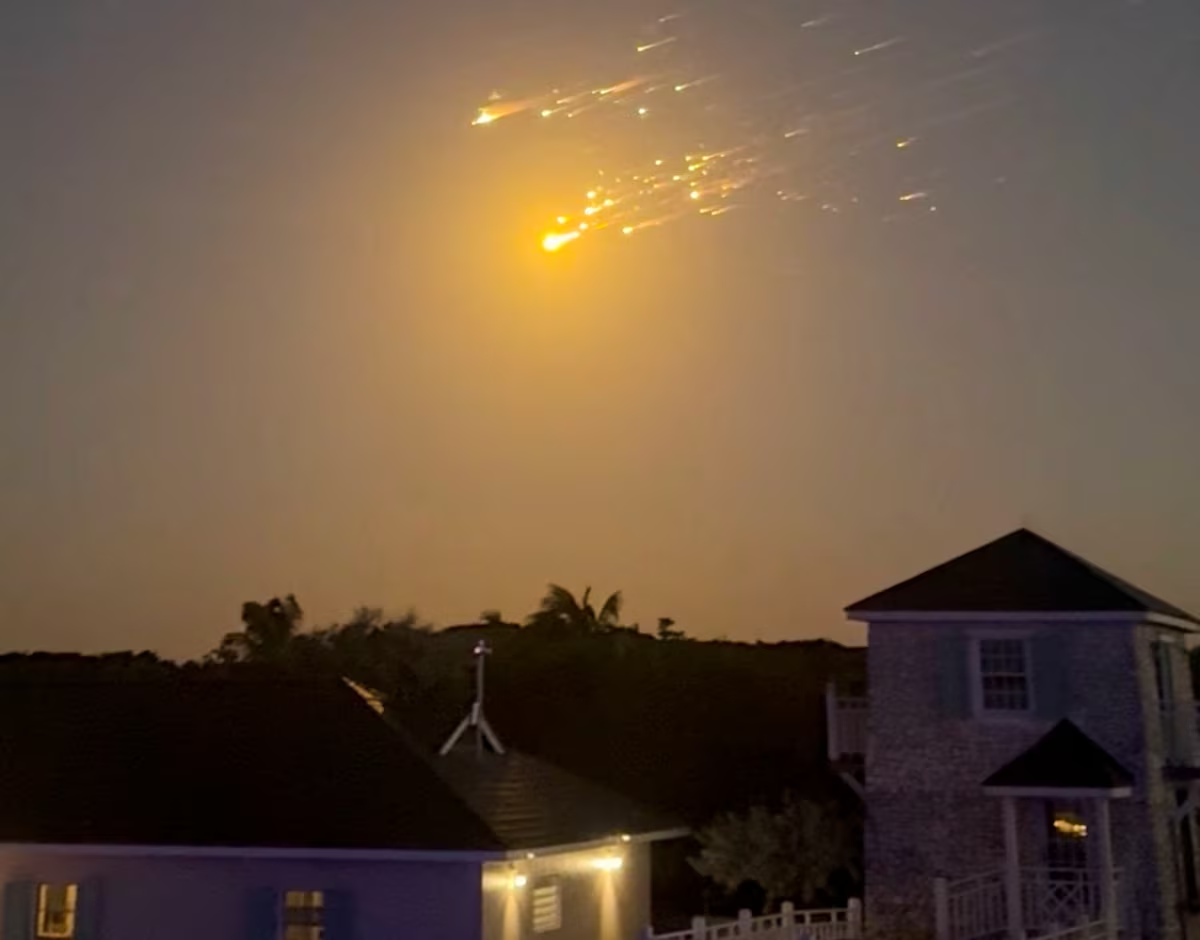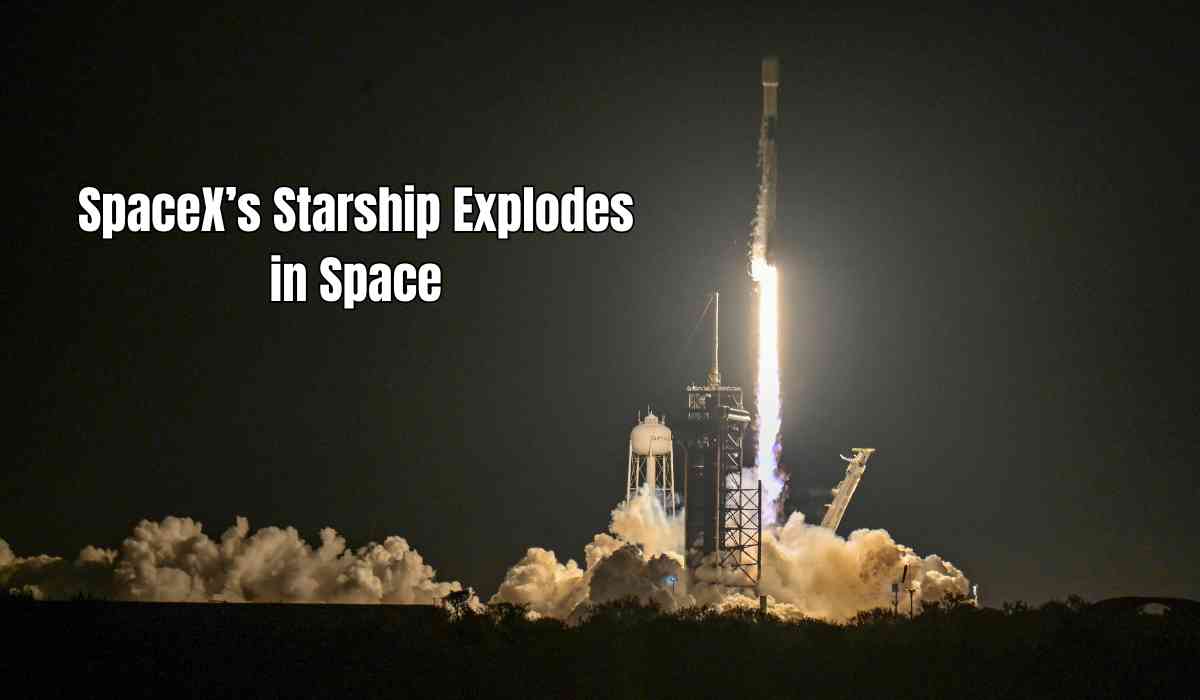SpaceX faced a significant setback as its Starship rocket lost contact and exploded over the Gulf of Mexico shortly after launch on Thursday. The incident led to a dramatic display of debris streaking across the skies near South Florida and the Bahamas. The explosion also had a ripple effect, causing temporary disruptions at multiple Florida airports.
Despite this failure, SpaceX achieved a milestone by successfully catching back the booster stage, marking progress in their long-term space exploration goals. However, this event raises concerns about the reliability of Starship, a crucial component in SpaceX’s ambitions for interplanetary travel and NASA’s Artemis program.

Starship Loses Contact and Explodes
The mission started successfully, with Starship launching from SpaceX’s Starbase facility in Boca Chica, Texas, at 5:30 PM (2330 GMT). However, shortly after booster separation, the upper stage was seen tumbling out of control before contact was lost.
SpaceX official Dan Huot acknowledged the failure, stating, “We lost contact with the ship, just like last time,” referring to a previous failed mission in January where the rocket’s upper stage exploded over the Caribbean, dispersing debris across the region.
Minutes after losing contact, videos surfaced on social media showing fireball-like debris illuminating the dusk skies near Florida and the Bahamas.
Liftoff of Starship! pic.twitter.com/OL7moLdZ2u— SpaceX (@SpaceX) March 6, 2025
SpaceX Successfully Recovers Booster Stage
Although the mission suffered a failure in the upper stage, there was a positive outcome: SpaceX successfully retrieved the massive booster stage. The booster, a crucial component of Starship’s two-stage design, was caught by the launch tower’s robotic arms, known as “chopsticks.”
This marked the third time SpaceX had successfully executed this complex maneuver, showcasing the company’s advancements in booster recovery—a key aspect of making space travel more sustainable and cost-effective.
Mechazilla has caught the Super Heavy booster! pic.twitter.com/JFeJSdnQ5x— SpaceX (@SpaceX) March 6, 2025
Impact on Florida’s Air Traffic
The explosion had immediate consequences beyond space exploration.
-
Flight Disruptions: The Federal Aviation Administration (FAA) temporarily halted departures at major Florida airports, including Miami International Airport, Fort Lauderdale-Hollywood International Airport, Orlando International Airport, and Palm Beach International Airport.
-
Delays: Departing flights were delayed by up to 45 minutes due to concerns over space launch debris falling across the Caribbean.
-
Resumption of Operations: Normal operations resumed around 8 PM ET (0100 GMT Friday) as the FAA assessed the situation and confirmed there were no further hazards to air traffic.
Setback for Elon Musk and SpaceX
This failure is another challenge for SpaceX and its CEO, Elon Musk.
-
Musk has been dedicating significant time to government reforms, leading the Department of Government Efficiency (Doge) under President Donald Trump’s administration.
-
SpaceX, which has been developing Starship as the most powerful rocket ever built, has faced multiple challenges in achieving full operational success for the vehicle.
-
With NASA relying on a modified version of Starship for its Artemis program to return astronauts to the Moon, such setbacks add pressure to ensure the rocket’s reliability.
RIP Starship Flight 8, just caught it exploding after a few engines cut off and it losing attitude control, viewed from Titusville, FL🚀 pic.twitter.com/VBBtApjsd7— 📸Trevor Mahlmann🚀 (@TrevorMahlmann) March 6, 2025
Starship’s Role in Space Exploration
Starship is not just another rocket—it is designed to revolutionize space travel.
-
Size & Power: At 403 feet (123 meters) tall, it is about 100 feet taller than the Statue of Liberty, making it the largest and most powerful launch vehicle in the world.
-
Reusability: Starship is intended to be fully reusable, reducing costs for deep-space missions.
-
Mars & Beyond: Elon Musk envisions Starship as the spacecraft that will take humans to Mars, forming the backbone of his plan to colonize the Red Planet.
-
NASA’s Lunar Missions: NASA is waiting for a modified Starship to serve as a lunar lander for its Artemis program, which aims to land astronauts on the Moon in the coming years.
Previous Starship Failures and FAA Involvement
This was Starship’s eighth orbital mission, and none have been crewed so far. However, failures have been a recurring issue:
-
January 16, 2024: The previous Starship test flight ended when the upper stage broke apart over the Turks and Caicos Islands.
-
FAA Investigation: After that incident, the FAA grounded Starship and led a cleanup effort for fallen debris. The latest explosion may prompt further investigations and regulatory scrutiny.
While SpaceX continues to push the boundaries of space exploration, setbacks like this highlight the challenges of developing a fully reusable, powerful spacecraft for interplanetary travel.
Despite the explosion, the successful booster recovery is a step in the right direction. However, with Starship being a crucial component of NASA’s lunar ambitions and Musk’s Mars dreams, ensuring its reliability will be critical. Future test flights will determine whether SpaceX can overcome these hurdles and fulfill its ambitious spacefaring goals.
With inputs from agencies
Image Source: Multiple agencies
© Copyright 2025. All Rights Reserved Powered by Vygr Media.
























